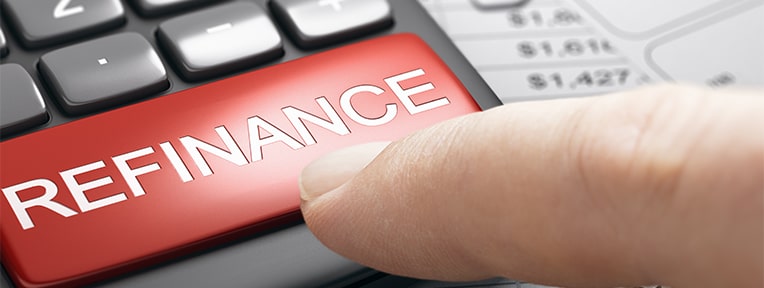
When and How to Refinance Your Personal Loan
Posted on Thursday, August 1st, 2024 | By IndusInd Bank
Refinancing your loans is a great way to pay off current debt at a more favourable interest rate. Now, did you know that a personal loan can be refinanced? Refinancing is usually associated with larger debt, like student or home loans. But if you want better terms on repayment, you can also refinance personal loans. Continue reading to learn more about refinancing a personal loan.
What Does Banking Refinance Mean?
Let’s understand the meaning of refinance in banking first. Refinancing is taking out a newer loan to pay off old debt, typically done to take advantage of lower interest rates.
For instance, your current personal loan is at an interest rate of 13% pa. But, you could find another lender offering the same loan terms at an interest rate of 11% pa. In this scenario, you might want to consider refinancing your existing personal loan. When you pay off your debt, even a 2% interest rate drop can significantly boost savings.
How Soon Should I Get a Personal Loan Refinanced?
Refinancing a loan needs thinking. It may not be the best choice for everyone. Consider refinancing if it significantly reduces your loan repayment. If your credit score has improved, refinancing could lower your loan rate. Borrowers seeking longer terms on their loans can also consider refinancing. It can allow you to extend the tenure for lower monthly premiums.
Lastly, you must also account for any prepayment expenses. Some lenders impose penalties if you repay your personal loan before it matures. If the total of these refinance loan application fees and prepayment penalties exceeds the amount you hope to save by refinancing, it may be best not to move forward with it.
How to Restructure a Personal Loan?
You can apply to the lender once you have learned the key details. These include the new loan terms and the refinancing interest rate. Here’s a quick overview of the actions you might need to take:
Step 1: Determine What You Need
The first step in refinancing a loan is figuring out how much you need to borrow. This way, you can prevent borrowing more than what is necessary. The more you borrow, the more you have to pay back, regardless of the new interest rate. Thus, exercising caution and doing a thorough calculation makes sense.
Step 2: Talk to Your Present Lender
Discuss this with your current lender. Given your reliable customer history, ask about better terms or waiving prepayment penalties.
Step 3: Select a New Lender Carefully
You can start looking for a new deal if you’re unhappy with the one your current bank or financier is offering. Before deciding on a few choices, compare the different lenders. Achieve financial clarity with stress-free loan planning using the IndusInd Bank Personal Loan calculator. You can calculate your personal loan EMI online by using this calculator.
Step 4: Verify Your Credit Rating
Make sure your credit score is high before applying to refinance your loan. A good credit score will ensure your application gets processed without issues at competitive interest rates.
Step 5: Apply for Loan Refinancing
Once ready, apply for the new loan online or in person. This will help with the application and paperwork.
Also read: How Personal Loan EMI Calculators Fuel Your Financial Strategy?
Types of Refinancing
Rate-and-Term Refinancing
Here, you replace your loan with a new one that has a different interest rate, tenure, or both—without changing the principal amount.
Cash-Out Refinancing
You take a new loan that’s bigger than your outstanding balance and use the extra funds for personal expenses. However, this increases your total loan amount.
Cash-In Refinancing
You pay a part of your outstanding loan amount upfront and refinance the remaining balance—often to enjoy better terms or lower EMIs.
Streamline Refinancing
A quicker process with fewer formalities, generally offered to borrowers with a strong repayment track record.
Pros of Personal Loan Refinancing
- Lower Interest Rates: Can reduce the overall cost of borrowing.
- Smaller EMIs: Extending the tenure lowers your monthly payment burden.
- Better Loan Terms: Switch from variable to fixed rates or vice versa.
- Debt Consolidation: Combine multiple loans into one for easier management.
Cons of Personal Loan Refinancing
- Additional Costs: Processing fees, prepayment penalties, or other charges can eat into your savings.
- Longer Repayment Period: While EMIs may reduce, a longer term can increase the total interest paid.
- Risk of Higher Debt: In cases like cash-out refinancing, you could end up with a larger repayment load.
- Credit Score Impact: Applying for a new loan may cause a temporary dip in your credit score.
Final Word
Refinancing a personal loan can be a smart financial step when done at the right time and for the right reasons. Assess your needs, calculate the benefits, and choose the lender and type of refinancing that works best for you. With the right approach, you could lower your costs and make repayment far smoother.


 Offers
Offers Rates
Rates Debit Card Related
Debit Card Related Credit Card Related
Credit Card Related Manage Mandate(s)
Manage Mandate(s) Get Mini Statement
Get Mini Statement
 categories
categories Blog collection
Blog collection Press Release
Press Release